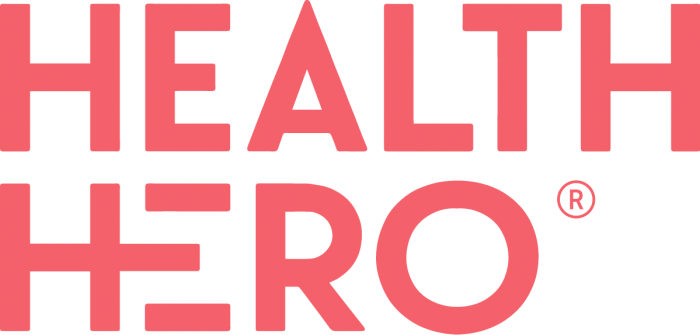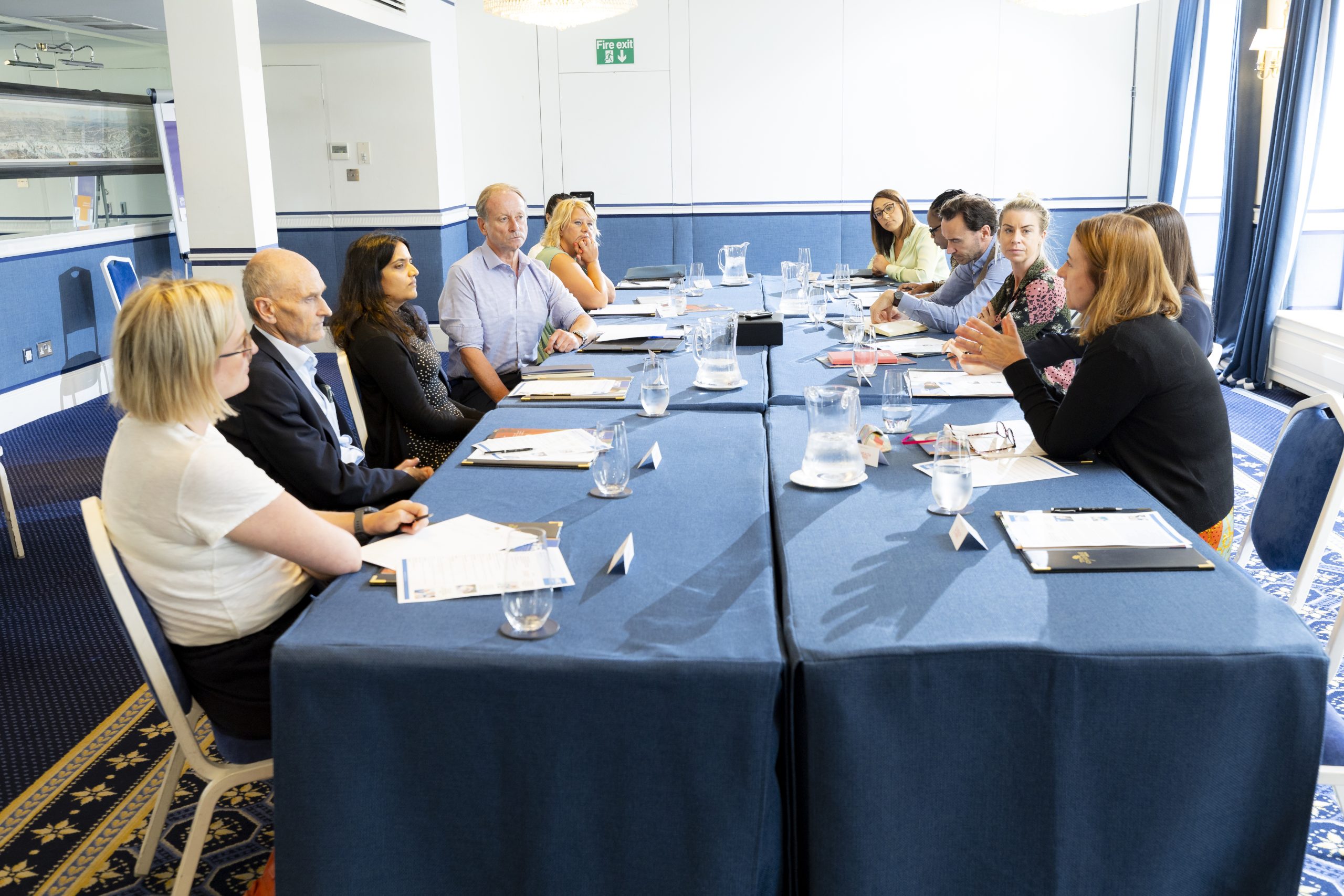
Resilient teams bounce back faster from challenges, adapt to new ways of working to increase efficiency and maintain a strong sense of cooperation in the midst of change. But mental health resilience cannot be built without other core physical wellbeing areas, including psychological, physical and financial, as they are all inextricably linked. The constellation of these dynamics are impactful, debilitating and wide-ranging.
THE DELEGATES:
Lauren Bacon, HR Business Partner – HealthHero
Maxine Bonwick, HR Director – Renault Group
Sara Meade, HR Manager – IFM
Iyna Butt, People & Culture Director – Office Principles
Mona Akiki, Chief People Officer – Perkbox
Cat Paterson, Director, HRBP – Elastic
Keima Allen, Senior HR Business Partner – Paragon Customer Communications
Simon Gibson, Group Head of Learning – Marks & Spencer
Hilary Holder, Senior Human Resources Business Partner – CAF
David Rees, HR Business Partner – WSP
Amy Shah, global HR Director – Savills Investment Management
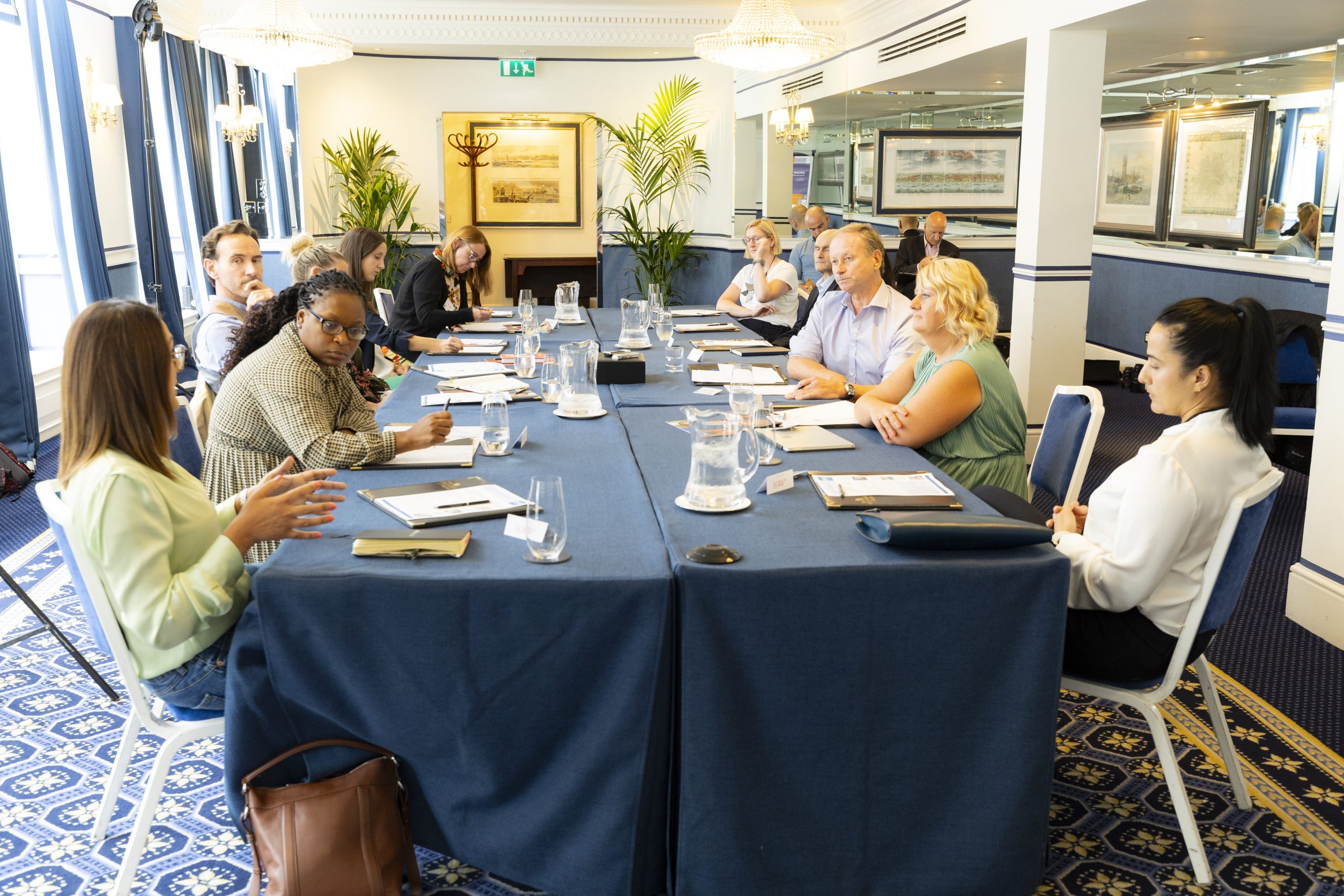
ARE YOU PRESENTLY BUILDING RESILIENT TEAMS AND IF SO, IS YOUR WELLBEING STRATEGY PLAYING A MAJOR PART IN THIS?
Maxine Bonwick: We have an overarching wellbeing strategy for benefits offerings, as well as how people can be proactive and reactive to health, through an employee assistance line for counseling or mental health first aiders and an array of platforms that people can tap into. Resilience is a broad subject and we’re on a journey to develop teams and managers to become more resilient in these changeable times, by advocating more openness about the stressors and pinch points, when people are feeling overwhelmed and how they can self-help. The aim is not about reducing absence, it’s about being human at work, not the bottom line.
Simon Gibson: We’ve stopped our general employee engagement survey and are now using more regular subsets, to garner feedback from a 5,000 representation of our 60,000 people, in order to give us a more regular drumbeat. We did that to promote greater ownership for managers and team leaders and to garner timely feedback.
Cat Paterson: A key questions is, “what is resilience’’? Because it’s quite subjective. Is it about completing tasks in a certain time, or is it about adaptability to problem solving and the ability to adjust? One certainty is that resilience is an issue that must not be underestimated. We view resilience on a personal level – between line managers and their team members – and whether individuals are struggling with adapting to change. This is pertinent, as our company is on a growth trajectory and we are driving transformation on how we go to market.
Lauren Bacon: I see resilience as part of the mental health piece, where there is no-onesize-fits-all. So, we need to look at resources and offerings, to see whether they are malleable and adaptable and whether they are supporting the many different needs of employees effectively. Equally, we need to provide managers with the tools to manage and adapt, because the world of work keeps changing, people are much less in line-of-sight and, on top of the commercial pressures, we are still in a moment of workforce transition, in which some people are thriving and others are struggling.

Keima Allen: The crux lies in understanding how the company can provide optimal support and one avenue for this is through methods like engagement surveys. Understanding the voice of the employee helped inform our communication strategy, backed up with regular updates on wellbeing matters. But to be candid, even with our dedicated efforts and having a much better understanding of the needs of our workforce, disseminating this information universally remains challenging. This, I believe, is at the heart of the problem of uptake. It’s valuable to cultivate both a resilient organisation and resilient individuals, but not everyone perceives what this means in the same positive light. Although resilience is often viewed favourably and is something we aim for universally, some individuals still put on a façade, struggling to overcome the stigma, that they need to project strength when it comes to their personal wellbeing, which inevitably leads to failing to address the underlying issues. This is where a more personalised approach is required.
Hilary Holder: Hybrid working is maturing and more people are choosing to come into work more, as they are recognising the benefits of social interaction. I think resilience is a finite resource, but it needs to be supported by techniques, tools and regular one-toones to discuss workloads, priorities and keeping pace with change. Overall, I think that hybrid working has really helped and people are a lot happier. When you look at our recent engagement survey and Investors in People assessment, we’re in the high 90 percents, in terms of wellbeing and the support we’re giving, but there is more we can do.
Iyna Butt: We’ve been driving resilience, not just for leadership, but across the whole business. Resilience is very much about having the ability to see the positives in a situation and being able to push through adversity and challenges. We pushed out this huge programme across the whole business for everybody to complete, which essentially focuses on understanding yourself and being able to understand your emotional intelligence, practice self-regulation and be empathetic to other people. Of course, there are people who are not great at managing adversity. I recently qualified as a personality profiling and resilience coach and if you have a few key advocates to provide local impacts within the business, that can support people who are struggling.
Sara Meade: Hybrid working is giving people more flexibility and that will even up work/life balance, which in turn will help with resilience levels. We’re mindful that we needed to level up and we introduced two new EAPs post-pandemic, because we felt that one wasn’t enough. Just to make sure our people across the business knew where to go for support in the transitional times that followed.
Amy Shah: Post-COVID we saw more challenges in resistance and resilience and we provided extra support for employees, in terms of mental health support, such as an online platform for employees to access a counsellor or therapist. The platform extended beyond that, to enable employees to tap into career coaching and mentoring, essentially all avenues of positive communication. We have mental health first aiders and although they are not trained mental health specialists, their role is to guide and signpost to specific professional advice. It can be quite tricky to find the right balance of interventions. Leadership behaviour and role-modeling is paramount, to set he right tone and culture and to promote that sense of belonging and purpose. Also communication is key in providing clarity, backed up by suitable and pertinent wellbeing offerings.
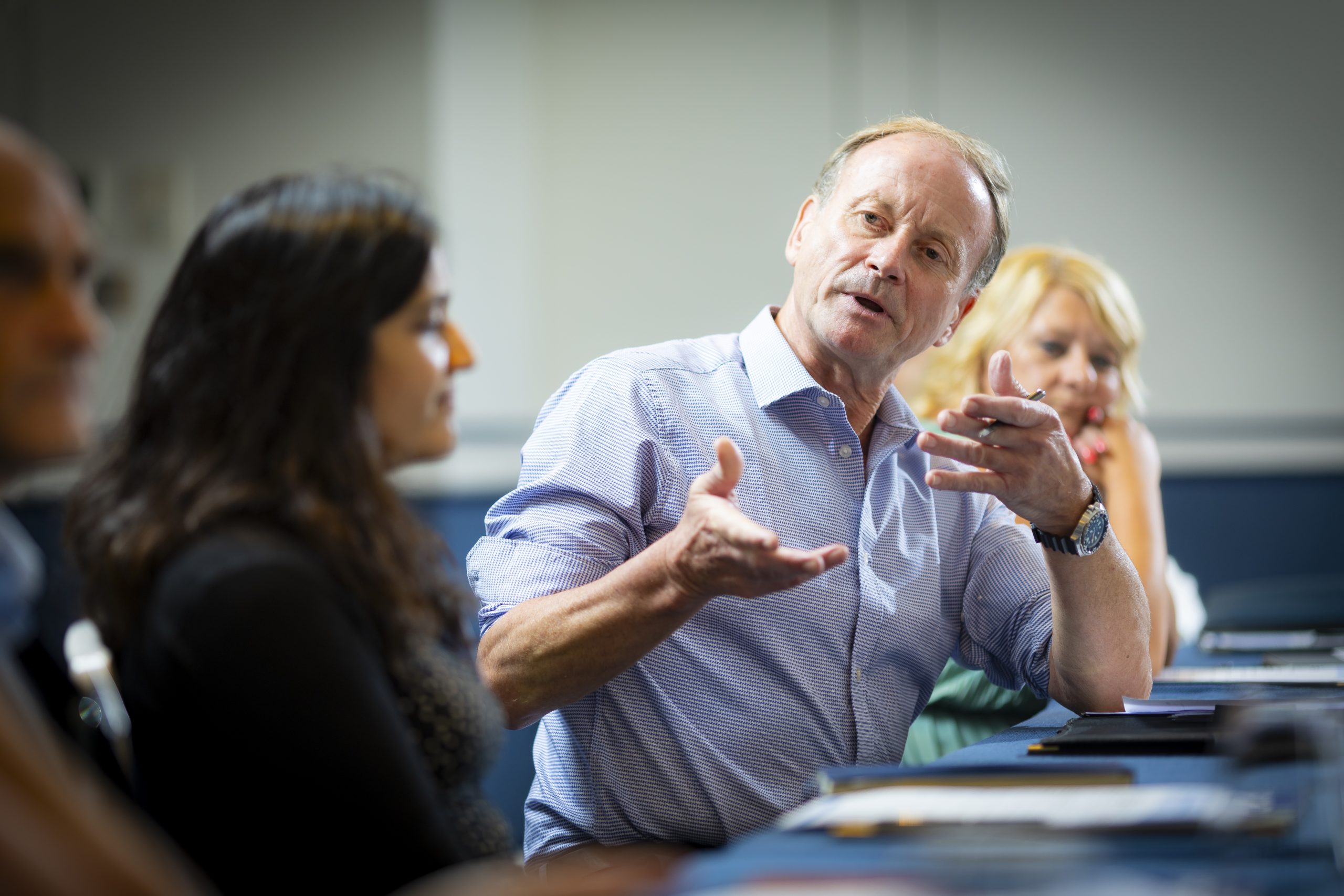
David Rees: There’s a propensity to try and cover any challenge with another initiative, but it’s really the day-to-day behaviours and relationships that matter. When there is a lot of tension, one poor interaction with a colleague or line manager can set things on a path to a breakdown. The data may be suggesting things are fine, but it’s the nitty-gritty on the ground that matters and that all points to the quality of line managers, supportive cultures and positive human interactions, which are key to engagement and resilience. A supportive and understanding culture that gives people the confidence to speak up when they are struggling is hugely important.
Simon Gibson: The shifting relationships between employer and employee up, down and across the organisation is a massive consideration. Pre-COVID, for many businesses, there was a culture change to be less paternalistic and to promote and support self-responsibility. But finding the right balance has been hard for many – too much and it’s nanny state territory – too little and you are uncaring and uncompetitive. It’s not just now, it’s always been hard to manage effectively in dynamic businesses, because there are a million-and-one pressure points. There’s also a rising expectation that line managers and leaders have to wear many hats – team leader, commercial manager, counselor and therapist – but is this the right approach? I would say providing great support is important, but building a culture of self-help is a fundamental aspect of the resilient workforce.
Maxine Bonwick: Employers have a duty of care, but individuals need to have ownership and self-care. A framework is necessary – there’s HSE legislations, the formalised duty-of-care and there’s culture and values – and it is about the messaging and communication to support autonomy. Schools provide a good example, how the teacher/pupil relationship has changed and the role of pastoral care has evolved and now encourages students to go away and reflect. They can talk about the opportunities and pitfalls of social media for instance, or how to express how they are feeling and identifying. I think as businesses, we can learn a lot from the education sector, how they’re encouraging children to self-help and also provide an environment where its fine to talk.

Lauren Bacon: I feel that we need to have balance on how and what we support and intervene in as employers. The pandemic changed the way we look at mental health, it’s mainstream, no longer a taboo subject and people are more aware and vocal. Everyone has mental health pressures and that’s understood, but how and to what degree an employer can intervene is a critical point of consideration. As has been said, mental first-aiders rarely have properly trained expertise and that is why culture, behaviours, communication and role-modeling are so important.
Keima Allen: Agreed, the central question remains, where do we establish the boundaries of intervention? It’s true that businesses hold a duty of care, while we encourage our employees to prioritise their own wellbeing. This is a valid message, but it’s equally essential for companies to implement measures that ensure individuals possess the necessary resources. Addressing this challenge hinges on communication and enhancing the skillsets of managers. Evolution is necessary, even in management styles – the manager-employee relationship once resembled a parent-child dynamic – now we must embrace an added responsibility. The world’s dynamics have shifted and various external factors demand attention, as these are issues we didn’t need to focus on as much before.

David Rees: Much has changed in the bigger picture, but the fundaments in work remain that being a good line manager is very important to the mutual benefit of both employee and the business. If you know your staff well and have created the right environment for them to thrive, that’s a very good foundation. There will always be external influences that test the basis of the relationship – a marriage breakup, costof-living pressures or a child being unwell – but if that relationship is strong, there is a better chance that any problem will be manageable.
Keima Allen: In the past, the prevailing culture dictated that you should keep things to yourself and soldier on without expressing your emotions. But now the emphasis is on encouraging individuals to voice their concerns and communicate openly, so that we can provide the necessary assistance. The current narrative, however, emphasises the availability of support. This to me signifies a reflection of the shifts in the workplace dynamics and the culture we are actively promoting, in terms of wellbeing and positioning a sustainability agenda at the heart of our brand promises.
Mona Akiki: We need to be mindful of the amount of pressure we put on managers – they cannot make everyone happy, all the time – but rather be as flexible as possible, within reason. We need to signal to managers that they are not going to solve every personal challenge that employees encounter – they are expected to listen and be as accommodating as possible – so long as it doesn’t create unrealistic expectations. If an employee requests more flexibility, what follows needs to be a pragmatic and adult conversation, that considers both the personal request and the business needs. More often than not, there will be a mutual agreement to which both can commit to.
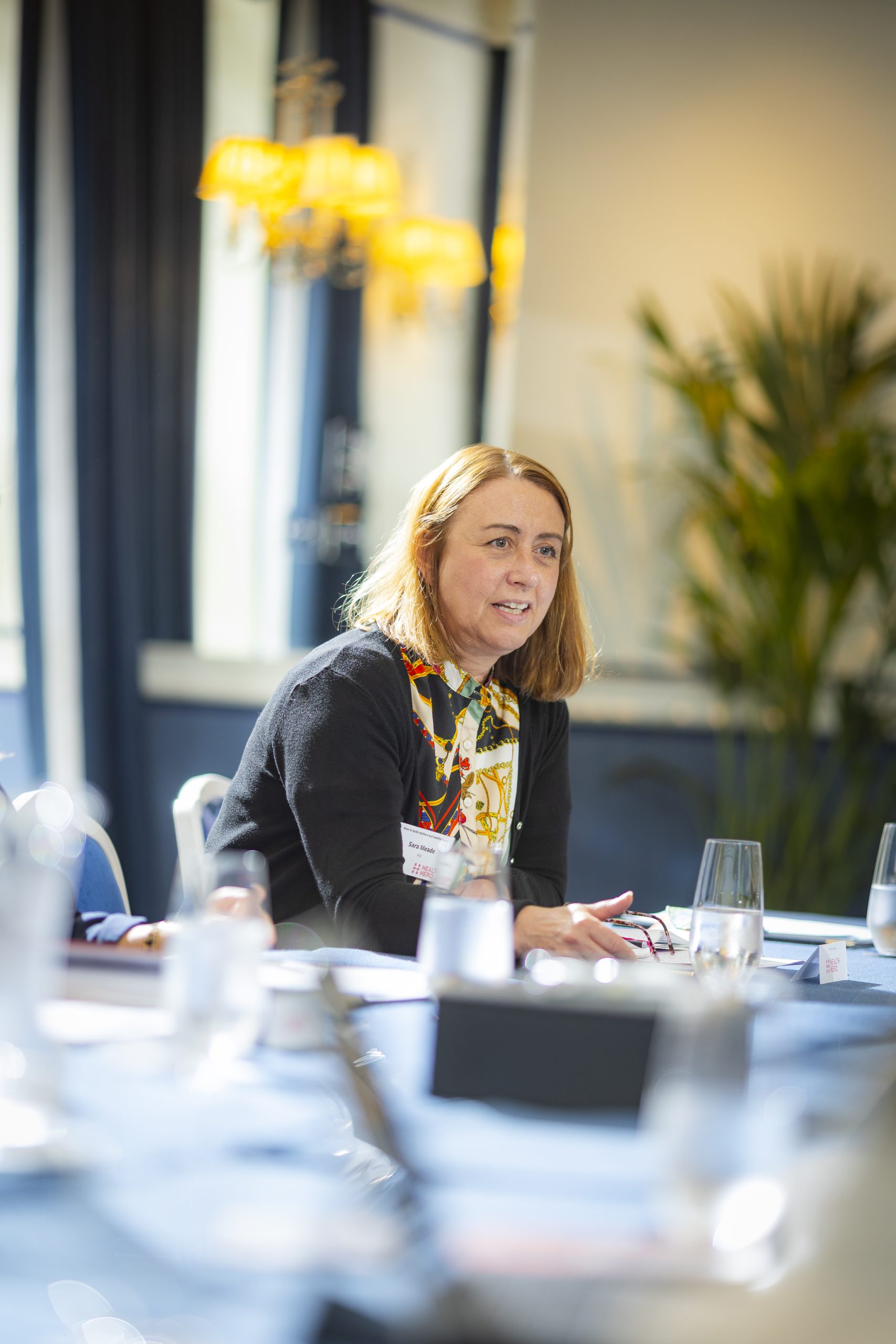
Iyna Butt: Agreed, as HR people we tend to have this mindset of wanting to be fixers, we want to provide every support solution possible. But increasingly, I see that the focus on emotional intelligence and self-regulation is an effective strategy to self-accountability. Individuals need to take ownership and, at the point they need help, HR and line managers must have the capacity to open the door and offer a support network, with options and a safe space to ask for and accept help.
Maxine Bonwick: It’s also about helping managers understand what resilience is and what it is not. It’s not about teams skipping around, happy all day, every day, that’s not resilience. People are emotional and should be, they will have bad days and we all have a spectrum of mental health. It’s not about shooting for the stars to have this perfect utopia, it’s about managing pressure and adjusting on a day-to-day basis. Sara Meade: Indeed, it is about understanding where the pressures are coming from and that it’s not just work pressure – for some, being at home might be the worst place they could be – and so we need to understand that homeworking isn’t some panacea to happiness for all.
WHAT IS THE BEST APPROACH TO MAKE PSYCHOLOGICAL, PHYSICAL AND FINANCIAL WELLBEING PROVISIONS COMBINED AND COHESIVE?
Lauren Bacon: We’ve spoken about transition a good deal and it’s a fact that we are always in a state of transition in our work and lives. Consequently, we need an agile approach.
Sara Mead: We have a platform that basically covers mental health, wellbeing and nutrition, amongst other. We also provide a financial advisor, available to all, who will discuss pensions, savings and anything financially related, at no cost to the employee. We also host regular webinars for everyone to join.
Maxine Bonwick: We in HR love trends and although we have a reputation for being adverse to change, actually we like trying new techniques and strategies, different levers and nudges. It’s about being alert to what’s working and stopping what’s not. We need to be comprehensive and consider financial, as well as physical and mental wellbeing and we should experiment with different apps, be bold and look at gamification.
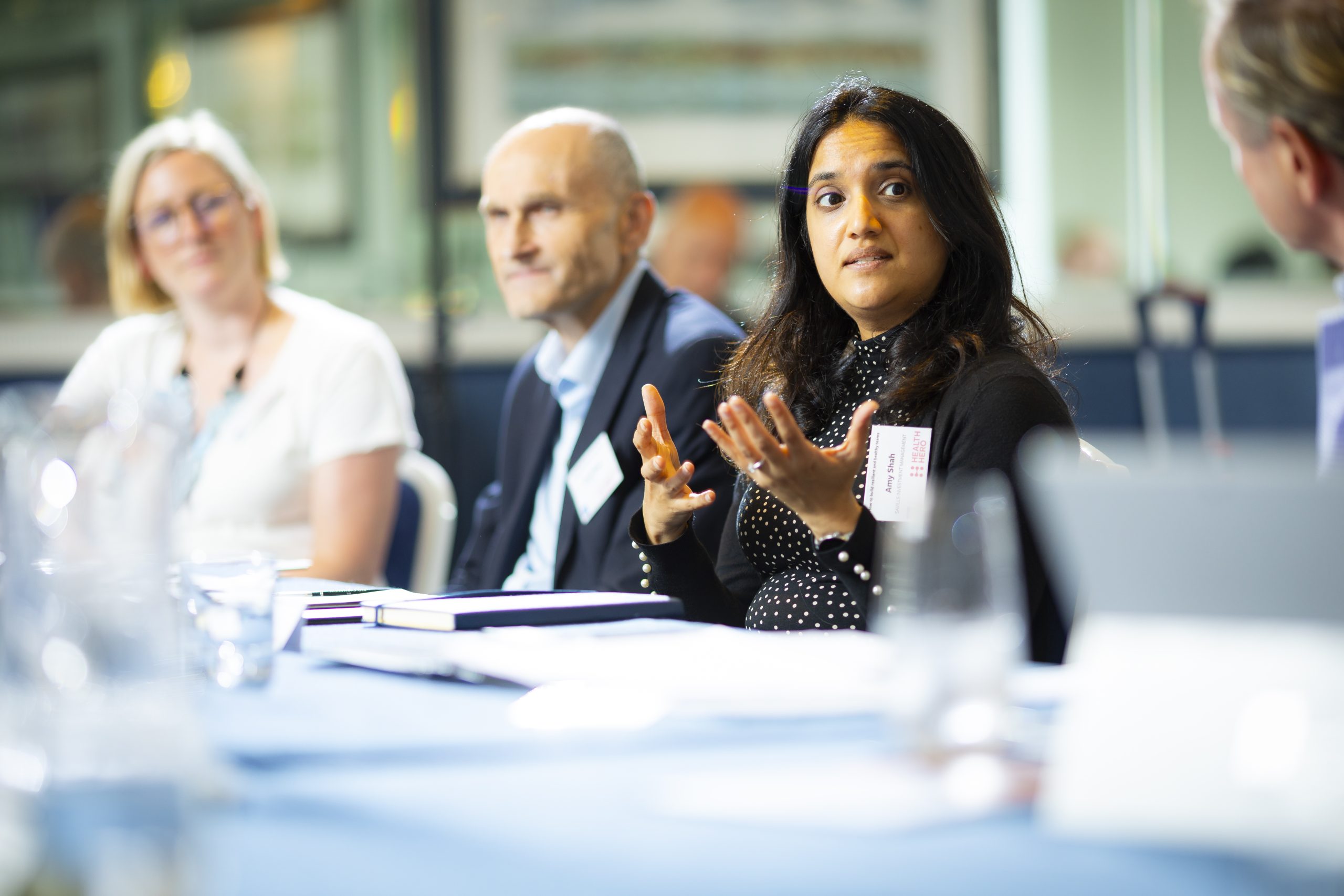 Simon Gibson: This is where technology will increasingly be applied. We now have access to a video GPs and we are discussing how artificial intelligence can help to manage people’s needs and requests in this area – AI can even part answer some of your emails and arrange your team’s diary now! The potential applications are really very compelling.
Simon Gibson: This is where technology will increasingly be applied. We now have access to a video GPs and we are discussing how artificial intelligence can help to manage people’s needs and requests in this area – AI can even part answer some of your emails and arrange your team’s diary now! The potential applications are really very compelling.
Amy Shah: We’re putting a lot of focus into the cultural environment and broader Employee Value Proposition; focusing on the pull factors. As a global business, we have cultural nuances in each jurisdiction, which we need to be mindful of and we have to take into account whenever we’re setting our wider culture and wellbeing offering. We still need to be mindful that it is still a taboo subject in some locations to talk about mental health struggles.
Keima Allen: It’s important to have an all-encompassing strategy, because a workforce in good health contributes to thriving teams and heightened productivity and helps to attract and retain the best talent.
DO YOU THINK WELLBEING STRATEGY CAN BE PREVENTATIVE AS WELL AS SUPPORTIVE? IF SO, HOW DO YOU DELIVER THIS FOR YOUR EMPLOYEES?
Simon Gibson: As the old adage goes, ‘prevention is better than cure’, but it’s a fine line. We can make people aware of options, but ultimately, it’s up to individuals to take advantage of what is on offer. This is where advocates that have taken advantage of what’s on offer can tell compelling stories, if their experiences have been positive.
Hilary Holder: Our wellbeing strategy incorporates psychological, physical, financial and social wellbeing. We look at trends and provide training and coaching to managers, in order to identify potential issues early. We also try not to assume what people may want or need, in terms of wellbeing advice and support and reach out to employees for their suggestions and involvement. We recognise that most people are likely to have issues impacting their wellbeing in some way and at some point and if these are non-work related, they may not always want to share these. However, if they do share these with their manager, HR or a mental health first aider – and these issues are having an impact on their performance or behaviours – then we engage with them from a supportive, solution-based perspective, to see what internal and external support may be available and how they may be able to access self-help tools and techniques.
CONSIDERING THE IMPACTS OF REMOTE WORKING, WHAT IS BEING REVEALED IN TERMS OF BEHAVIOURS?
Maxine Bonwick: There’s a different type of pressure in remote working – people’s perception of an email can be different – the tonality of it in words – when they do not see people as often. What we’ve experienced is not necessarily health issues that have come to light by people working from home, but more around the culture piece of hybrid. How is someone perceiving that email if they’re in the office, compared to if they’re working remotely? Written communication can sound tougher, more combative remotely. Also, it’s dependent on your mood – although you are on teams, you are physically on your own at home – where there is more digital channel noise, which is having an increasing impact on people. In our business, people are in two days a week and so you have that ability for people to check-in and there is informal team connections and an anchoring of the two days, so people really can still build relationships, which helps.
Simon Gibson: Size and scale of a company make a difference as does the maturity of an organisation. It’s easier to embrace and watch over a smaller workforce and there’s just something about scale and complexity that makes a difference in how to approach this. Additionally, we’ve discussed culture and some businesses will boast of a highperformance culture – nothing wrong with that – but for obvious reasons, that can come across as callous and so there are clearly some important balances and sensitivities in play here.
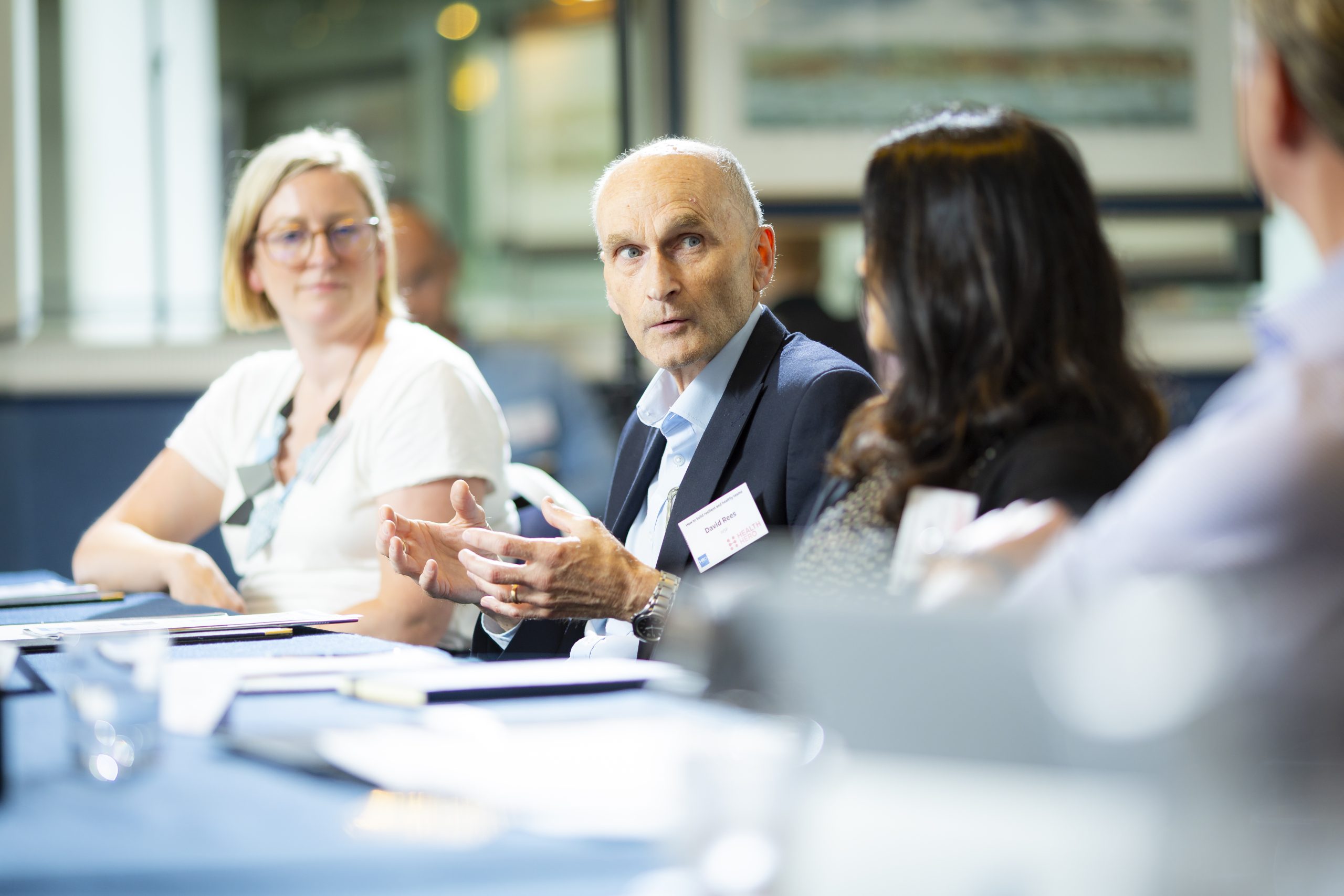
Iyna Butt: All-for-performance increasingly looks old-school – as does command-and-control, being target-driven and always having to prove your worth – in terms of commercial value. Consequently, commercial big hitters rose to the top of the business and they weren’t necessarily good managers. I hate using the terminology, but in more recent times, it’s clear that socalled “soft skills”, are really important – without them, you’re not going to be able to lead the business through change and crisis, without attrition spiraling upwards. It’s important to understand that mental health isn’t linear. Crisis at work or in life in general, impacts our mindset and behaviours and having managers that are empathetic is paramount to a well-balanced, happy and resilient workforce.
Hilary Holder: There’s a real piece around that seamless employee experience, which includes those in management roles. I see this as a holistic approach, giving managers the training to role model and the tools to help support and build their teams.
DO PEOPLE REALLY JOIN COMPANIES FOR THEIR WELLBEING BENEFITS?
Simon Gibson: The reality is with wellbeing support, it’s like insurance – you don’t know that you need it until you need it – and so for many younger people, there will be no experience. But for others that have benefitted from support, of course it will be attractive that wellbeing support is there for the mutual benefit of employer and employee.
Iyna Butt: Indeed, it’s stage of life and different circumstances and similar to the perceptions around pensions, it will be top or bottom of mind, depending on mindset.
Simon Gibson: As with all aspects of the emerging work era, it’s about providing options and flexibility, because as the well-worn phrase suggests, onesize-does-not-fit-all. The problem for many businesses is, the way they operate and their systems do not support this. In retail, especially in a 24/7- and 365-day environment, it requires a determined effort and innovative approaches to meet expectation and need around flexibility.
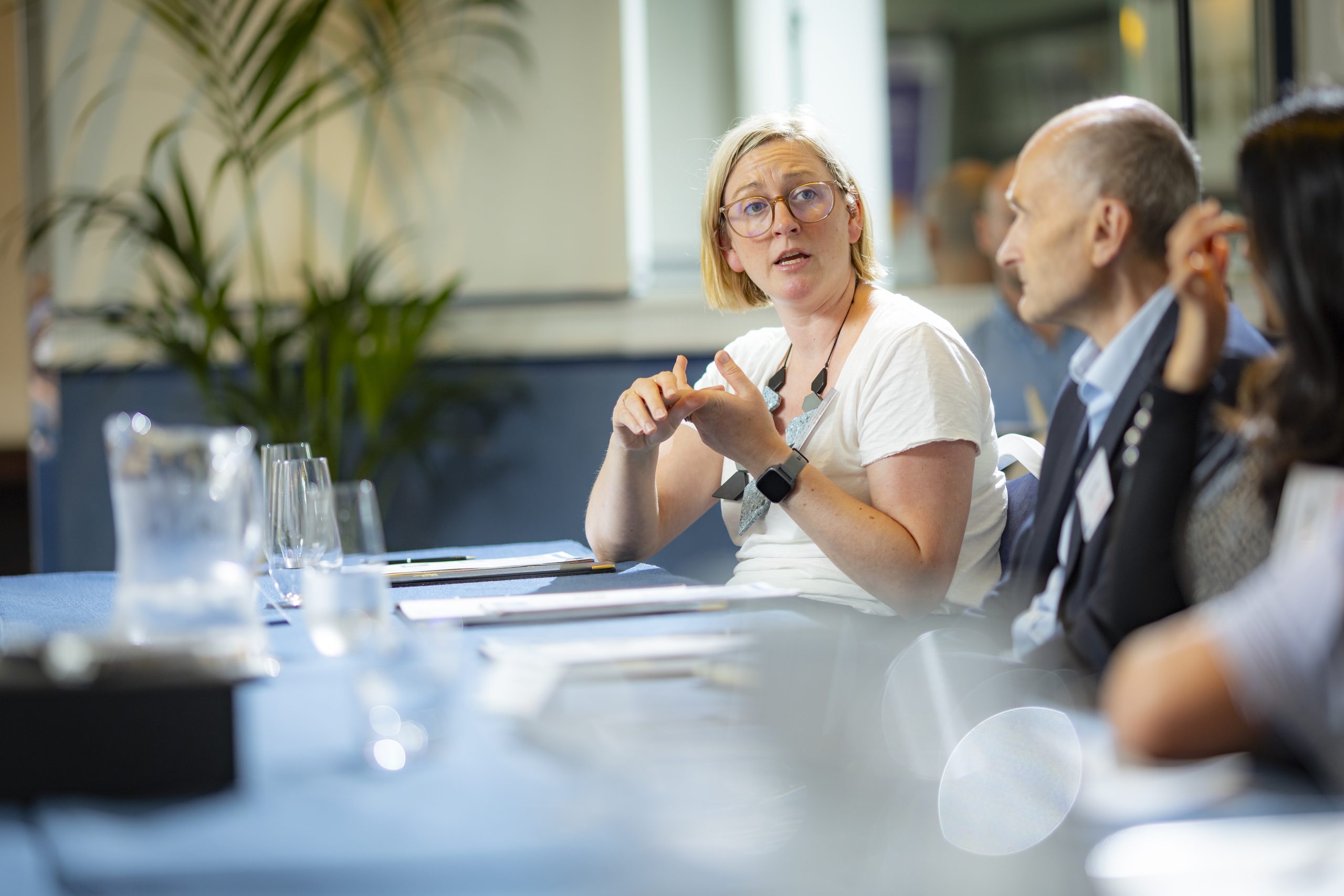
Amy Shah: The workplace is multigenerational and we have to cater for that in a much changed environment. Looking at new entrant employees – graduates and apprentices – pre-pandemic was about the more rigid framework of time and location and the appeal was unimpeded connectivity with peers and managers, training and learning on the job, being inspired by others and life experiences by osmosis. Now with hybrid working, there is less of an opportunity to learn in a physical workplace and back then, it all contributed to wellbeing, because there was motion, a network and support.
Sara Meade: Wellbeing cannot be underestimated and offerings have to be inclusive and equal – the same for directors and all employees across the business. But there is a difficult reality with flexible working, that not all employees can work from home and that is an issue for businesses to deal with now and in the future.
Cat Paterson: In terms of inclusion, it’s about optionality and choice and this can itself be divisive. Take the bereavement of a pet – whereby grieving pet owners can take two days off – for anyone that doesn’t own a pet, that can be difficult to understand.
Maxine Bonwick: It’s reminding people of the difference between inclusion and fairness. Inclusion and flexibility in benefits is key – if people don’t want private medical, they should be able to flex for another option.
WHAT ARE THE KEY CHALLENGES IN HAVING MULTIPLE ADDED VALUE SERVICES FROM DIFFERENT PROVIDERS AND DIFFERENT WAYS OF ACCESSING? DOES THIS CREATE BARRIERS TO USABILITY?
Simon Gibson: Usability is essential, as is communication and when it becomes to an offering that is too noisy and complicated, more becomes less.
Keima Allen: This is the pivotal question and if we are aiming to be an inclusive and caring employer, I believe we must endeavour to go beyond the essentials of statutory provisions. Our commitment to going above and beyond stems from a genuine desire to support our employees comprehensively. In essence, the core message revolves around continuous communication and reflection of who we are as an organisation and incorporating those promises into what our brands aim to convey, not only to customers, but to employees.
WHAT ARE THE BEST WAYS TO KEEP EMPLOYEES AWARE OF BENEFITS OFFERED AND PROVISIONS AND MAKE SURE THAT SERVICES ARE ACCESSED?
Hilary Holder: It’s telling people about the benefits and support services available when they apply for a role and it’s reminding them when they start and throughout their employment through various platforms.
Mona Akiki: It really depends on your demographics and how they process information. We need to be mindful of that, understand and respond accordingly. Organisations need to adjust to their employees, if you really want to be inclusive. If you have a demographic that isn’t tech savvy, then the best apps out there may not be helpful, without proper training. In those instances, you may want to try a more simple approach, assuming it’s scalable. For a dispersed, tech-savvy demographic, there is no point in putting up posters on walls to describe benefits. It all goes back to knowing your audience.
Iyna Butt: It’s also about motivation and understanding that not everyone aspires to climbing the career ladder above all else. Equally, some people simply don’t want change and just want to do their job. This all means that organisations need to be incredibly adaptable, because the variety of motivations is considerable.
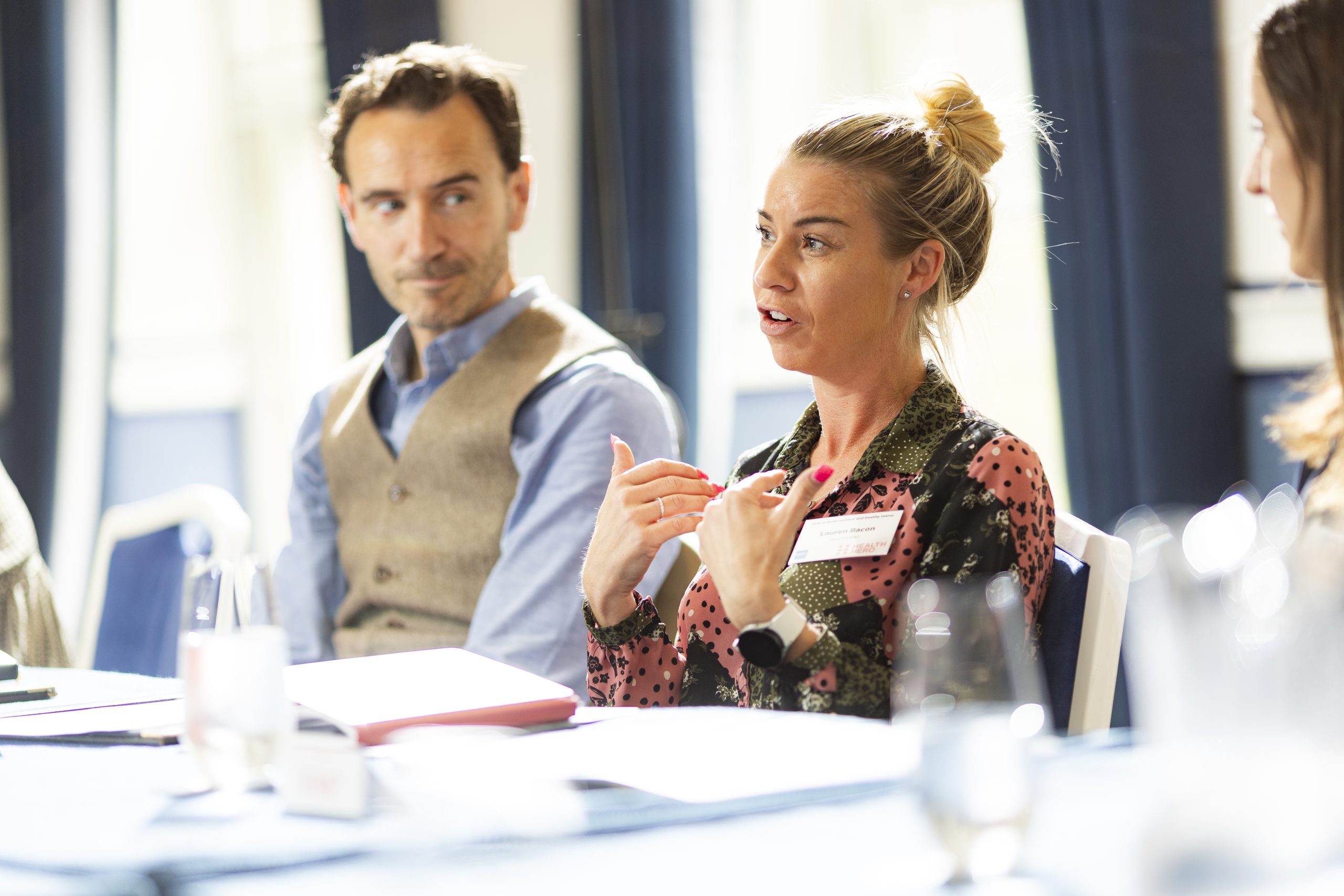
Keima Allen: Effective communication relies on active sharing. It’s equally vital to lend an attentive ear, which means not just hearing, but also taking practical steps to provide resources and provisions that are inclusive and encompass all employees and taking care not to inadvertently exclude individuals. At the heart of this approach is a combination of communication and attentive listening. But we need to persistently focus on refining and promoting initiatives already in place, by checking in regularly with employee voice, creating a synergy attuned to employee needs and aspirations and fostering an inclusive and supportive workplace culture.
Simon Gibson: Above all, the many issues in this agenda cannot be ignored or put on the back boiler. Looking at it from a commercial point of view though, there also has to be a business reason for all of this activity and associated cost and resource and that is keeping a healthy workforce, productive and on the right track. Part of that means tuning into what is working and turning off what is not.
Lauren Bacon: It’s always described as a journey these days, but really it’s just evolution and there are a myriad of opportunities to achieve continuous improvement that helps everybody out. But evolution demands evolvement and that is our biggest challenge in these fast-moving times. We have increasingly sophisticated sets of data to interpret and inform, but throughout this roundtable, delegates have discussed the merits of understanding people and their needs and, above all, that listening. As the old adage has it, if you want to know what’s really going on in a business, don’t go to the boardroom, go to the canteen or, more likely in these hybrid working times, team chatrooms.
FOR FURTHER INFO WWW.HEALTHHERO.COM
